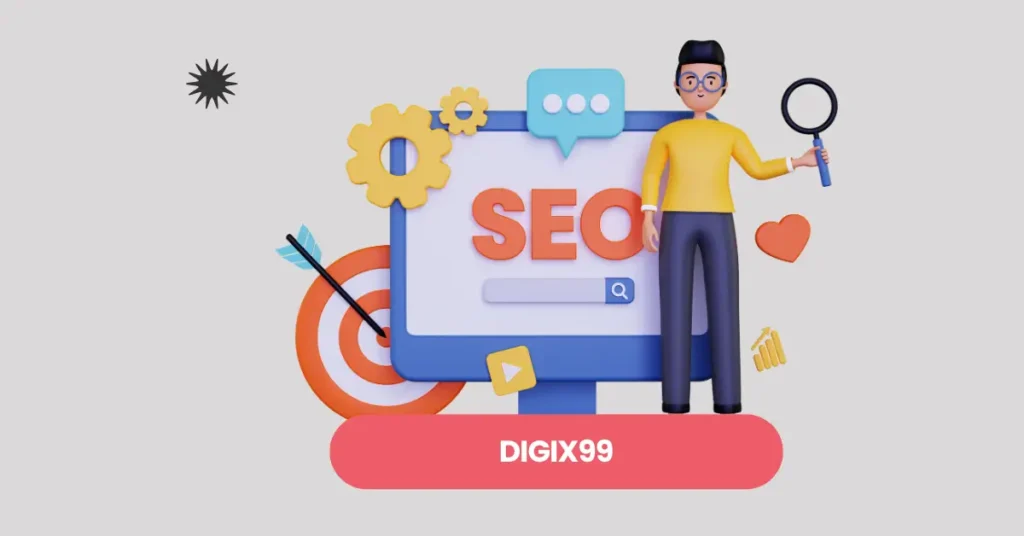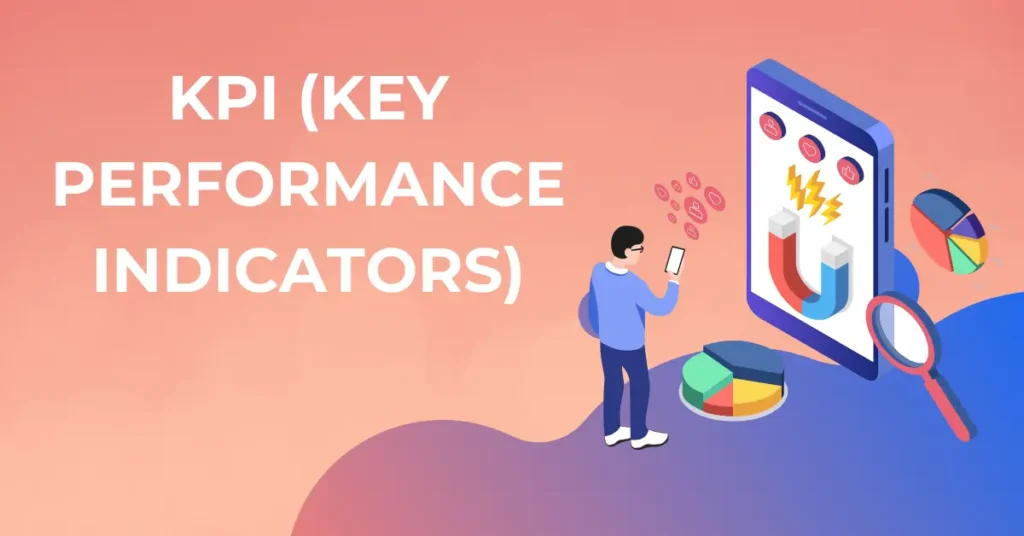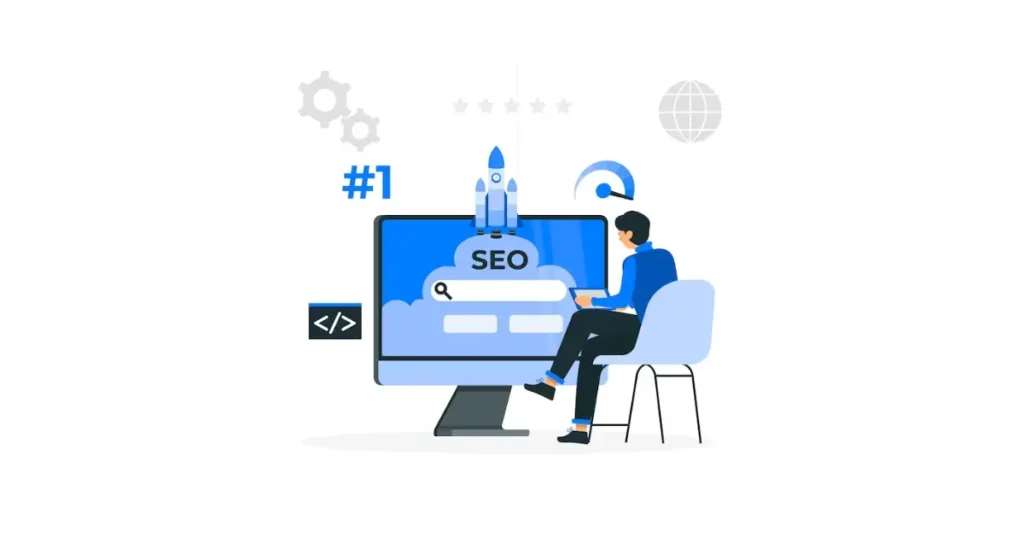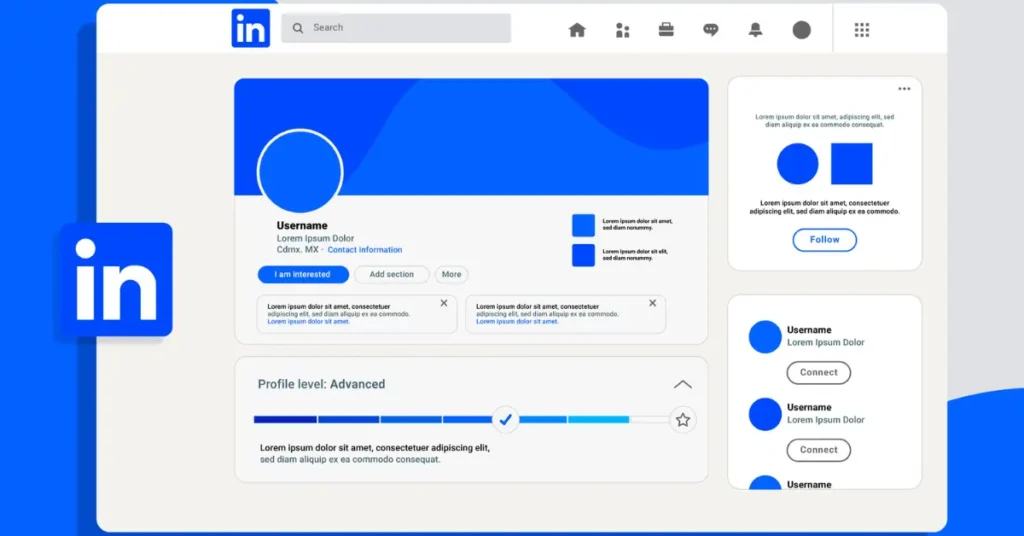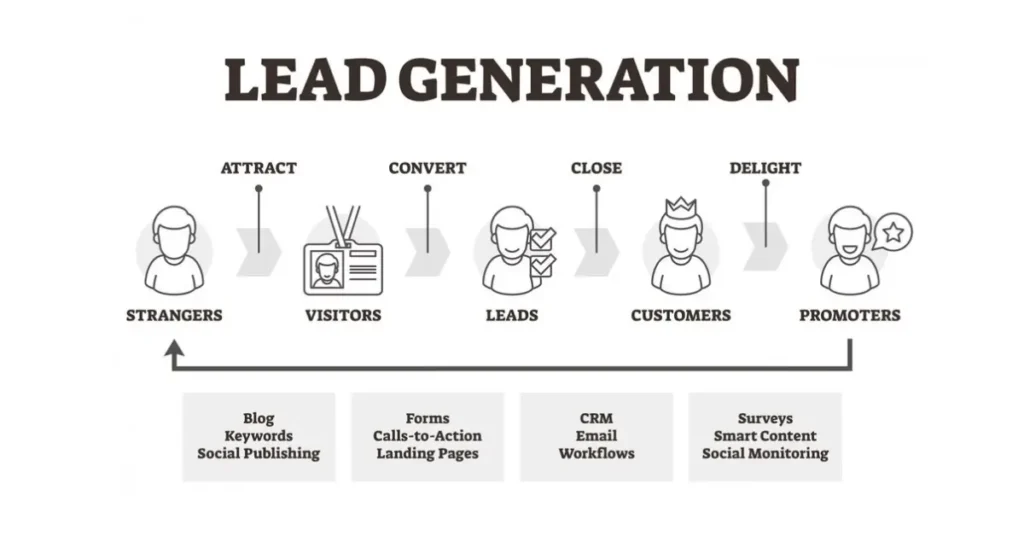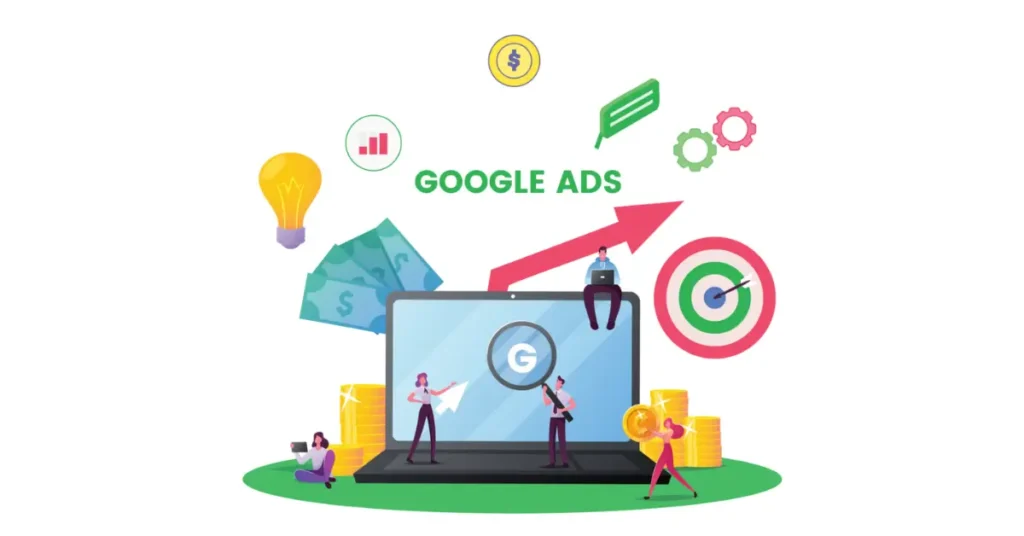Lead generation is the lifeblood of any successful business. Without a steady flow of qualified leads, it’s challenging to maximize revenue and drive growth. In this comprehensive guide, we will explore various lead generation strategies that can help you fill your sales pipeline with high-quality leads.
What is Lead Generation?
Lead generation is the process of attracting and capturing the interest of potential customers, known as leads, and nurturing them into qualified prospects for your business. The goal of lead generation is to fill your sales pipeline with individuals who have expressed interest in your products or services and are more likely to convert into paying customers.
Effective lead generation makes the job of your sales team easier by providing them with a pool of leads who are genuinely interested in what you have to offer. It allows you to focus your efforts on individuals who are more likely to convert, saving time and resources.
Types of Qualified Leads
Not all leads are created equal. There are different types of qualified leads, each with varying levels of interest and engagement. Understanding these types can help you prioritize your efforts and tailor your marketing strategies accordingly. Here are four common types of qualified leads:
- Marketing Qualified Leads (MQLs): MQLs are leads who have shown interest in your company through actions like subscribing to a newsletter or downloading content. They are considered passive leads who are likely to make a purchase once a relationship has been established.
- Product Qualified Leads (PQLs): PQLs are prospects who have used your product, usually through a free trial or a free version, and have expressed interest in upgrading to a paid version or taking the next steps.
- Sales Qualified Leads (SQLs): SQLs are active leads who have directly engaged with your company, indicating a higher level of interest in your product or service. They may have reached out through a specific channel or expressed interest in a sales conversation.
- Service Qualified Leads: Service qualified leads are prospects who have indicated to your service team that they are ready to upgrade or make a purchase. These leads should be passed on to the sales team immediately for conversion.
By categorizing leads into these types, you can focus your efforts on nurturing and converting those who are most likely to become customers.
Inbound Lead Generation vs. Outbound Lead Generation
In lead generation, there are two primary approaches: inbound and outbound. Let’s explore the differences between the two:
Inbound Lead Generation
Inbound lead generation involves attracting potential customers to your business through various marketing strategies. The key idea is to create valuable content and experiences that align with the interests and needs of your target audience. By providing relevant and helpful information, you attract leads organically and encourage them to engage with your brand.
Some common inbound lead generation strategies include:
- Search engine optimization (SEO) and content marketing: Creating high-quality, optimized content that ranks well in search engines and attracts organic traffic.
- Social media marketing: Leveraging social media platforms to engage with your target audience, build brand awareness, and drive traffic to your website.
- Email marketing: Nurturing leads through targeted email campaigns, delivering valuable content, and encouraging them to take further action.
Inbound lead generation focuses on building trust, establishing thought leadership, and creating a positive brand image. It allows potential customers to initiate the relationship with your business, making the transition from lead to customer more natural.
Outbound Lead Generation
Outbound lead generation, on the other hand, involves actively reaching out to potential customers to generate leads. This approach is more proactive and typically involves direct outreach through various channels.
Some common outbound lead generation strategies include:
- Cold calling: Contacting potential customers who have not shown prior interest in your product or service.
- Email outreach: Sending targeted emails to prospects who fit your ideal customer profile.
- Paid advertising: Running ads on platforms like Google Ads or social media to reach a wider audience.
- Direct mail: Sending physical mail, such as brochures or postcards, to potential customers.
Outbound lead generation allows you to have more control over who you reach and when, but it can be more challenging to capture the attention and interest of prospects who may not be actively seeking your products or services.
Both inbound and outbound lead generation strategies have their merits, and a combination of the two can yield the best results for your business. It’s essential to understand your target audience and tailor your strategies accordingly.
How Lead Generation Works: A 4-Step Process Overview
Successful lead generation involves a systematic process that moves potential customers from initial awareness to becoming qualified leads. While the specific tactics and channels may vary, the general process can be summarized in four steps:
- Awareness: The first step is to create awareness of your brand and offerings. This can be done through various marketing channels, such as content marketing, social media, and search engine optimization. The goal is to attract potential customers and make them aware of your business and what you have to offer.
- Interest: Once potential customers are aware of your brand, the next step is to generate interest and engage them further. This can be accomplished through compelling content, lead magnets, and targeted messaging. The goal is to capture their attention and entice them to learn more about your products or services.
- Conversion: The conversion stage involves turning interested prospects into leads by collecting their contact information. This is typically done through lead capture forms, gated content, or other conversion-focused tactics. The goal is to obtain their email address or other relevant details, allowing you to continue the nurturing process.
- Nurturing: After capturing leads, the final step is to nurture them through targeted communication and content. This can include personalized emails, educational resources, and offers tailored to their specific needs and interests. The goal is to build trust, establish credibility, and guide leads through the buyer’s journey, ultimately leading to a sale.
By following this 4-step process, you can effectively move potential customers through the lead generation funnel and increase the likelihood of conversion.
Lead Generation Examples: How to Generate Leads Across Channels
Lead generation can be executed across various channels, depending on your target audience and industry. Here are some examples of lead generation strategies for different channels:
Website and Landing Pages
- Lead Magnets: Offer valuable resources or incentives, such as ebooks, guides, or exclusive content, in exchange for visitors’ contact information.
- Contact Forms: Optimize your contact forms to capture leads efficiently. Keep them simple and easy to fill out.
- Gated Content: Provide high-quality content that can only be accessed after visitors submit their contact details. This can include white papers, case studies, or industry reports.
Social Media
- Lead Generation Ads: Utilize lead generation ads on platforms like Facebook, Instagram, or LinkedIn to capture leads directly within the social media platform.
- Engaging Content: Share valuable and engaging content on social media that directs users to your website or landing pages for lead capture.
- Contests and Giveaways: Run social media contests or giveaways that require users to provide their contact information to enter.
Email Marketing
- Newsletter Sign-ups: Encourage website visitors to sign up for your newsletter to receive regular updates and valuable content.
- Lead Nurturing Campaigns: Develop targeted email campaigns to nurture leads and guide them through the buyer’s journey.
- Personalization: Use segmentation and personalization techniques to tailor your emails to specific audience segments and increase engagement.
Events and Webinars
- Virtual Events: Host webinars or virtual events on topics relevant to your target audience and collect leads through registration forms.
- In-person Events: Attend trade shows, conferences, or industry events to network with potential leads and collect contact information.
- Partnerships: Collaborate with other businesses or influencers to co-host events or webinars and reach a wider audience.
These are just a few examples of the many lead generation strategies you can implement across different channels. The key is to understand your target audience, select the most appropriate channels, and create compelling offers and experiences to capture and nurture leads.
Lead Generation Outsourcing
For some businesses, outsourcing lead generation activities can be a viable option. Lead generation services specialize in gathering lead information and can provide you with a steady stream of high-quality leads. However, it’s essential to choose a reputable and reliable lead generation service that aligns with your business goals and target audience.
Outsourcing lead generation can be beneficial in the following situations:
- Limited Resources: If your business has limited resources to hire and train an internal marketing team dedicated to lead generation, outsourcing can provide a cost-effective solution.
- Cold Calling and Email Prospecting: When you want to focus on cold calling or personalized email prospecting to schedule appointments, outsourcing can help you reach a larger audience more efficiently.
- New Product or Service Launch: When launching a new product or service, outsourcing lead generation can help generate interest and attract potential customers from the start.
- Rebranding: If your business is going through a rebranding process, outsourcing lead generation can help you create awareness and attract leads under the new brand identity.
While outsourcing lead generation can be an effective strategy, it’s crucial to thoroughly vet the service provider to ensure they prioritize quality over quantity and have a deep understanding of your ideal customer profile. Alternatively, investing in lead generation software tools and generating your own leads can also be a viable option for many businesses.
How to Create the Most Effective Lead Generation Strategies for Your Business
Creating effective lead generation strategies requires a deep understanding of your target audience and their needs. Here are some tips to help you develop the most effective lead generation strategies for your business:
1. Map and Match Your Customer Journey
Develop a clear understanding of your customer’s journey, from initial awareness to conversion. Map out each touchpoint and interaction they have with your brand and identify potential opportunities for lead generation. Ensure that your lead generation strategies align with and support each stage of the customer journey.
2. Identify the First Steps
In the early stages of the customer journey, potential buyers are typically seeking general information about your products or services. Identify the information they are looking for and develop strategies to provide it in a way that captures their interest and encourages them to share their contact information.
3. Meet Your Leads Where They Are
Engage your potential customers through the channels they already use and prefer. Whether it’s social media, email, or other online platforms, make sure your lead generation strategies are tailored to the channels your target audience frequents. Adapt and learn new platforms as trends and preferences evolve.
4. Make Them Want More
Pique the interest of potential leads and give them reasons to want to learn more about your offerings. Develop compelling lead magnets, such as discounts, free resources, or exclusive content, that provide value and entice prospects to provide their contact information.
5. Take Advantage of Social Media
Leverage the power of social media to reach and engage your target audience. Offer lead magnets, share testimonials, practice social listening, and create good, shareable content that sparks interest and drives engagement. Utilize targeted advertising strategies to reach the right audience with your lead generation offers.
6. Build a Library of Well-Written Blogs
Invest in content marketing by creating a blog that offers valuable and informative articles relevant to your target audience. Optimize your blog posts for search engines to increase visibility and attract organic traffic. Use lead capture forms and gated content to capture leads from your blog visitors.
7. Use Reviews and Testimonials
Harness the power of social proof by showcasing reviews, testimonials, and case studies from satisfied customers. Positive feedback and endorsements can significantly impact potential leads’ decision-making process. Encourage satisfied customers to write reviews and offer incentives for referrals to generate more leads.
8. Implement Email Marketing Strategies
Develop targeted email marketing campaigns to nurture leads and guide them through the buyer’s journey. Personalize your emails based on the recipient’s interests and behavior. Use segmentation and automation tools to ensure your emails are relevant and timely.
9. Diversify Your Lead Generation Channels
Don’t rely on a single lead generation channel. Diversify your strategies to reach a broader audience and capture leads from various sources. Experiment with different channels and tactics to identify which ones yield the best results for your business.
10. Measure and Optimize Your Efforts
Track and analyze the performance of your lead generation strategies. Monitor key metrics such as lead conversion rates, cost per lead, and return on investment (ROI). Use these insights to refine and optimize your strategies for better results.
By following these tips and continuously evaluating and adjusting your lead generation strategies, you can create effective and scalable approaches that drive consistent results for your business.
Tips for Generating Leads
Generating leads is a continuous process that requires ongoing effort and optimization. Here are some tips to help you generate leads effectively:
- Targeted Content: Create content that addresses the pain points and interests of your target audience. Tailor your messaging and offers to resonate with their needs and preferences.
- Optimized Landing Pages: Design and optimize your landing pages to convert visitors into leads. Use compelling headlines, clear calls to action, and persuasive copy to encourage lead capture.
- Clear Value Proposition: Clearly communicate the value and benefits of your products or services. Highlight what sets you apart from the competition and why leads should choose your business.
- Lead Magnets: Offer valuable resources or incentives in exchange for contact information. Develop lead magnets such as ebooks, guides, templates, or exclusive content that align with your target audience’s interests.
- Social Proof: Showcase testimonials, case studies, and customer reviews to build trust and credibility. Highlight success stories and positive experiences to demonstrate the value of your offerings.
- Personalization: Tailor your messaging and offers to individual leads whenever possible. Use segmentation and personalization techniques to deliver more relevant and targeted content.
- Lead Nurturing: Implement lead nurturing campaigns to engage and educate leads over time. Provide relevant and valuable content that moves leads through the buyer’s journey and builds trust.
- Continuous Testing and Optimization: Regularly test and optimize your lead generation strategies. Analyze data, track metrics, and make data-driven decisions to improve the effectiveness of your campaigns.
Remember, lead generation is an ongoing process that requires constant monitoring and refinement. Stay updated with industry trends, test new strategies, and adapt to the evolving needs and preferences of your target audience.
What Comes Next? How to Qualify a Lead
Once you have generated leads, the next step is to qualify them to determine their level of interest and likelihood of conversion. Lead qualification helps you prioritize your efforts and focus on leads that are most likely to become customers. Here are some key steps in the lead qualification process:
- Lead Scoring: Assign points or scores to leads based on their demographic and behavioral attributes. Consider factors such as job title, company size, engagement level, and actions taken on your website or other channels.
- Lead Grading: Evaluate leads based on their fit with your ideal customer profile. Consider factors such as industry, company revenue, and budget. Grade leads as A, B, C, or D based on their alignment with your target customer criteria.
- Lead Qualification Criteria: Define specific criteria that a lead must meet to be considered qualified. This can include factors such as budget, authority, need, and timeline (BANT). Use these criteria to determine whether a lead is ready for further engagement or should be nurtured further.
- Lead Handoff to Sales: Once a lead meets your qualification criteria, it is ready to be passed on to your sales team for further engagement. Provide your sales team with the necessary lead information and context to ensure a smooth transition and effective follow-up.
By implementing a lead qualification process, you can ensure that your sales and marketing teams are focusing their efforts on leads that have the highest potential for conversion. This helps optimize your resources and increase the efficiency of your lead generation efforts.
The Role of Lead Generation Tools and CRM in the Process
Lead generation tools and customer relationship management (CRM) software play a crucial role in streamlining and optimizing the lead generation process. These tools help automate tasks, track leads, and provide valuable insights for better decision-making. Here are some key functions of lead generation tools and CRM in the lead generation process:
- Lead Capture and Management: Lead generation tools allow you to capture leads’ contact information through forms, landing pages, and other conversion-focused tactics. CRM systems help organize and manage leads, ensuring that no potential lead falls through the cracks.
- Lead Nurturing and Automation: Lead generation tools and CRM systems enable automated lead nurturing campaigns. You can set up email sequences, personalized messaging, and targeted content delivery to engage leads and guide them through the buyer’s journey.
- Lead Scoring and Grading: Lead generation tools often include lead scoring and grading features. These functionalities allow you to assign scores or grades to leads based on their attributes and behaviors, helping you prioritize and focus on the most promising leads.
- Analytics and Reporting: Lead generation tools and CRM systems provide valuable insights into the performance of your lead generation efforts. You can track metrics, such as lead conversion rates, cost per lead, and return on investment (ROI), to measure the effectiveness of your campaigns and make data-driven decisions.
- Integration and Data Syncing: Lead generation tools and CRM systems can integrate with other marketing and sales tools, ensuring seamless data syncing and providing a holistic view of your leads and customer interactions.
By leveraging lead generation tools and CRM systems, you can streamline and optimize your lead generation efforts, improve lead management, and make data-driven decisions to drive better results.
Offline Lead Generation Strategies
While online lead generation strategies are prevalent in today’s digital age, offline lead generation strategies still play a vital role in reaching and engaging potential customers. Here are some effective offline lead generation strategies:
Word of Mouth
Word of mouth is one of the most powerful and authentic forms of lead generation. When satisfied customers share their positive experiences and recommend your brand to others, it can significantly impact the decision-making process. Encourage word of mouth by providing exceptional customer experiences and offering incentives for referrals.
Public Relations
Offline public relations (PR) practices can still be valuable in generating leads and building brand credibility. Editorials and media coverage in newspapers, magazines, TV, and radio programs can increase brand visibility and attract potential customers. Pitch press releases to relevant publications and leverage media coverage to boost lead generation efforts.
Branding
Invest in offline branding activities to create a strong brand image and reputation. Participate in community events, sponsor local initiatives, and demonstrate social responsibility. By showing that you care about the community and share their concerns, you can build a positive brand reputation and attract potential customers.
Sponsorship
Sponsorship of events or initiatives related to your industry or target audience can generate leads and enhance brand visibility. Align your brand with relevant causes or events that resonate with your target customers, and showcase your expertise and solutions. Sponsorships create a positive brand association and can attract leads who share the same values and interests.
Partnership
Partnerships with other businesses or individuals in complementary industries can be mutually beneficial for lead generation. Collaborate on joint products, joint ventures, or distribution partnerships to expand your reach and tap into new customer segments. By sharing resources and expertise, you can generate leads together and increase your chances of conversion.
Offline Ads
Offline advertisements, such as print ads, billboards, and radio or TV commercials, can still be effective in reaching a wider audience. Develop creative and compelling ads that capture attention and deliver your key message. Ensure that your advertisements are targeted to your ideal customer demographic and placed in relevant locations or media channels.
Direct Mail
Direct mail campaigns can be an effective way to reach potential customers directly. Send targeted mailers, postcards, or promotional materials to individuals who fit your target audience criteria. Personalize your direct mail and provide a clear call to action to encourage leads to take the next step.
Cold Calling
While cold calling may have earned a bad reputation, it can still be a valuable lead generation strategy when done effectively. Display your contact information prominently on business cards, printed materials, and online channels. Local businesses, in particular, can benefit from prominently displaying their phone numbers for easy access by potential customers.
Customer Incentives
Offering customer incentives can motivate leads to take action and become customers. Consider offering coupons, special offers, loyalty programs, or referral programs to incentivize leads to make a purchase or refer others. These incentives create a sense of urgency and reward customers for their loyalty and advocacy.
Offline lead generation strategies can complement online efforts and provide additional opportunities to engage with potential customers. By integrating offline and online strategies, you can create a comprehensive lead generation approach that reaches a wider audience and maximizes your conversion potential.
Online Lead Generation Strategies
In today’s digital age, online lead generation strategies have become increasingly important for businesses. Here are some effective online lead generation strategies:
Website and Landing Pages
Your website serves as a hub for online lead generation. Optimize your website and landing pages to capture leads effectively. Use clear calls to action, compelling headlines, and persuasive copy to encourage lead capture. Offer valuable lead magnets, such as ebooks, guides, or exclusive content, in exchange for contact information.
Social Media
Leverage the power of social media platforms to reach and engage your target audience. Use social media channels, such as Facebook, Instagram, LinkedIn, or Twitter, to share valuable content, interact with potential customers, and drive traffic to your website or landing pages. Run lead generation ads, contests, or referral campaigns on social media to capture leads directly within the platform.
Email Marketing
Email marketing remains a highly effective strategy for lead generation. Build and grow your email list through newsletter sign-ups, lead capture forms, or gated content. Develop targeted email campaigns to nurture leads, deliver valuable content, and guide them through the buyer’s journey. Personalize your emails based on the recipient’s interests and behavior to increase engagement and conversion rates.
Content Marketing and Blogging
Content marketing and blogging are powerful lead generation strategies. Create high-quality, informative, and valuable content that addresses the pain points and interests of your target audience. Optimize your blog posts for search engines to increase visibility and attract organic traffic. Use lead capture forms, gated content, or content upgrades to capture leads from your blog visitors.
Lead Magnets and Gated Content
Develop compelling lead magnets, such as ebooks, white papers, templates, or checklists, that provide value to your target audience. Gate this premium content behind lead capture forms to capture contact information from interested prospects. Ensure that your lead magnets are highly relevant to your target audience’s needs and interests.
Paid Advertising
Paid advertising, such as pay-per-click (PPC) ads or display ads, can help you reach a wider audience and generate leads. Use platforms like Google Ads or social media advertising to target specific demographics or interests. Develop compelling ad copy and landing pages that encourage lead capture and conversion.
Webinars and Online Events
Host webinars or online events on topics relevant to your target audience. Promote these events through your website, social media, and email marketing. Use registration forms to capture leads and follow up with tailored content and offers. Online events provide an opportunity to establish thought leadership, showcase your expertise, and engage potential customers.
SEO and Search Engine Marketing
Invest in search engine optimization (SEO) to improve your website’s visibility in search engine results. Conduct keyword research to identify relevant search terms and optimize your website accordingly. Develop high-quality, optimized content that answers your target audience’s questions and addresses their needs. Consider paid search engine marketing (SEM) to complement your SEO efforts and increase visibility.
The Power of Email Marketing in Lead Generation
Email marketing remains a cornerstone of successful lead generation strategies. When executed effectively, email campaigns can nurture leads, build relationships, and guide prospects through the buyer’s journey. Here’s how to harness the power of email marketing for lead generation:
Segmentation and Personalization
Divide your email list into segments based on demographics, behaviors, or interests. Tailor your email content to each segment, ensuring that recipients receive messages relevant to their needs and preferences.
Automated Drip Campaigns
Set up automated drip campaigns that deliver a series of targeted emails over time. These campaigns can provide valuable information, showcase product features, and gently guide leads towards making a purchase.
Lead Nurturing
Use email marketing to nurture leads by providing educational content, addressing common pain points, and offering solutions. Establish your brand as a trusted resource, making leads more likely to convert when they are ready to make a decision.
Clear Calls to Action (CTAs)
Include clear and compelling calls to action in your emails. Whether it’s inviting leads to download a resource, attend a webinar, or make a purchase, make the next steps obvious and enticing.
Mobile Optimization
Ensure that your emails are mobile-friendly, as many users check their emails on smartphones. A responsive design and concise, engaging content will improve the user experience and increase the likelihood of lead interaction.
A/B Testing
Experiment with different elements of your emails, such as subject lines, copy, images, and CTAs. Conduct A/B testing to identify what resonates most with your audience and optimize your future email campaigns based on the results.
Personalized Follow-ups
Use email as a tool for personalized follow-ups after events, webinars, or interactions with leads. Thank them for their engagement, provide additional resources, and keep the conversation going.
Opt-In Strategies
Build your email list with ethical opt-in strategies. Clearly communicate the value that subscribers will receive, whether it’s exclusive content, discounts, or regular updates. Make the opt-in process easy and transparent.
Email Analytics
Leverage email analytics to track the performance of your campaigns. Monitor metrics like open rates, click-through rates, and conversion rates. Use these insights to refine your email strategy and improve future campaigns.
Integrate with CRM
Integrate your email marketing platform with your Customer Relationship Management (CRM) system. This integration streamlines lead management, allowing for a seamless transition between marketing and sales teams.
By incorporating these email marketing best practices into your lead generation strategy, you can create a powerful channel for engaging and converting potential customers.
Measuring and Optimizing Lead Generation Efforts
To ensure the ongoing success of your lead generation strategies, it’s crucial to measure their performance and continuously optimize your approach. Here are key steps to measure and optimize lead generation efforts:
Define Key Metrics
Clearly define the key performance indicators (KPIs) that align with your lead generation goals. Common metrics include lead conversion rates, cost per lead, lead quality, and return on investment (ROI).
Implement Tracking Tools
Utilize analytics and tracking tools to monitor the performance of your lead generation campaigns. Platforms like Google Analytics, marketing automation tools, and CRM systems provide valuable insights into user behavior and campaign effectiveness.
Conversion Rate Optimization (CRO)
Regularly assess and optimize your landing pages and conversion paths. Conduct A/B testing on elements like headlines, visuals, and CTAs to identify what resonates best with your audience and drives higher conversion rates.
Lead Source Analysis
Analyze the sources of your leads to understand which channels and strategies are most effective. This information helps allocate resources to the most fruitful channels and refine less successful ones.
Feedback and Surveys
Collect feedback from your leads and customers through surveys or direct communication. Understand their preferences, pain points, and expectations. Use this information to tailor your lead generation strategies to better meet their needs.
Competitor Analysis
Keep an eye on your competitors’ lead generation tactics. Analyze what works for them and adapt successful strategies to fit your business. Differentiate your approach by identifying opportunities that competitors may have overlooked.
Budget Allocation
Evaluate the allocation of your lead generation budget across different channels. Adjust your budget based on the performance of each channel, directing more resources to those yielding the best results.
Regular Review and Adjustment
Schedule regular reviews of your lead generation strategies. Analyze the data, identify trends, and make data-driven adjustments to optimize your campaigns. The digital landscape evolves, and staying adaptable ensures continued success.
Team Collaboration
Foster collaboration between your marketing and sales teams. Establish clear communication channels for feedback on lead quality, sales interactions, and closed deals. A collaborative approach improves the alignment between marketing and sales efforts.
Stay Informed About Industry Trends
Stay informed about industry trends and changes in consumer behavior. Adapting your strategies to emerging trends ensures that your lead generation efforts remain relevant and effective.
By consistently measuring, analyzing, and optimizing your lead generation efforts, you can refine your strategies, enhance efficiency, and maximize the impact on your sales pipeline.
Conclusion
Effective lead generation is essential for driving business growth and maximizing revenue. This comprehensive guide has explored various aspects of lead generation, from understanding what it is to implementing strategies across different channels. By following the outlined steps and tips, businesses can create a robust lead generation framework tailored to their target audience and industry.
Remember that lead generation is an ongoing process that requires adaptability and a commitment to continuous improvement. Whether through inbound or outbound strategies, online or offline channels, businesses can leverage a combination of approaches to reach and engage their audience effectively.
Investing in lead generation tools, CRM systems, and email marketing further enhances the efficiency of the process, allowing for streamlined lead management and personalized communication. Measuring and optimizing efforts based on data-driven insights ensure that resources are allocated wisely and campaigns stay aligned with business objectives.
In a dynamic business landscape, staying informed about industry trends and competitor strategies positions businesses to innovate and stay ahead in the lead generation game. By implementing the insights and strategies presented in this guide, businesses can build a robust sales pipeline, nurture high-quality leads, and ultimately drive sustainable growth.


